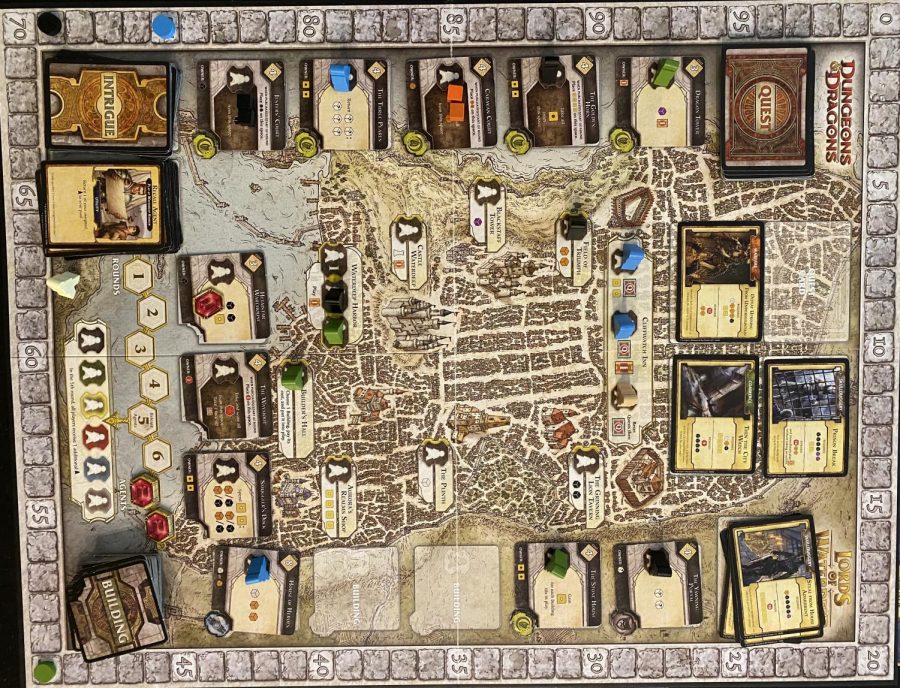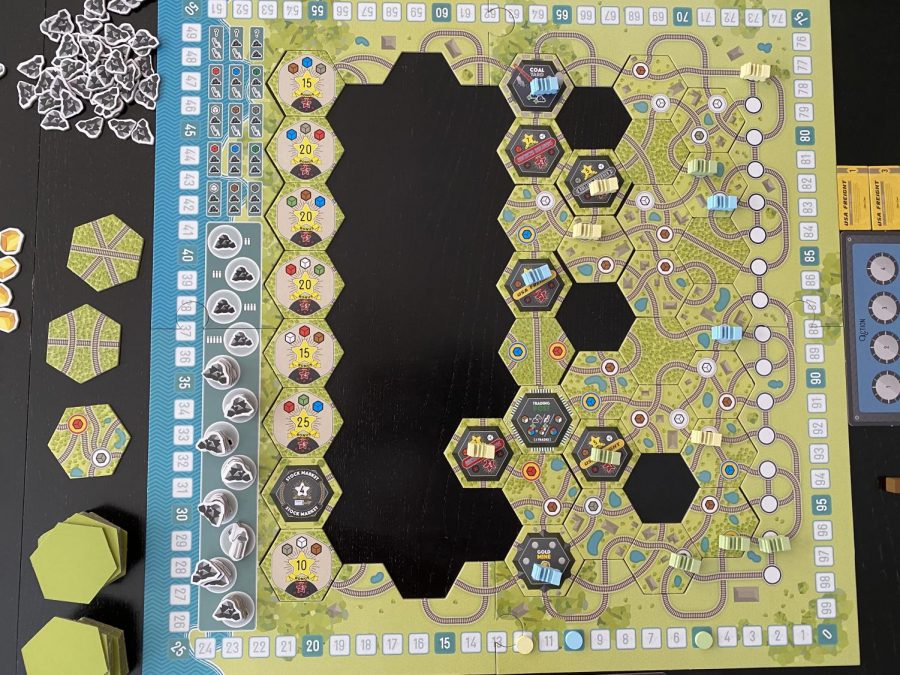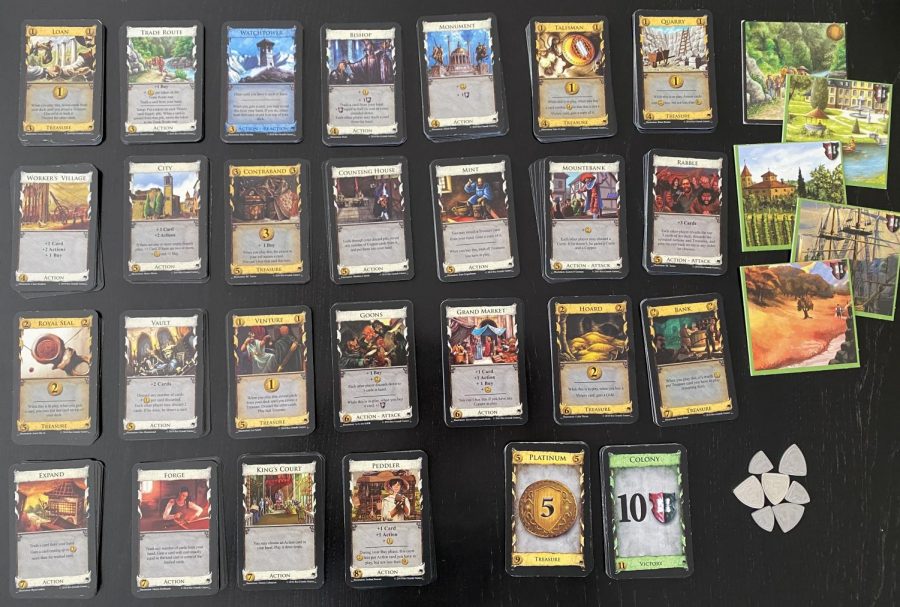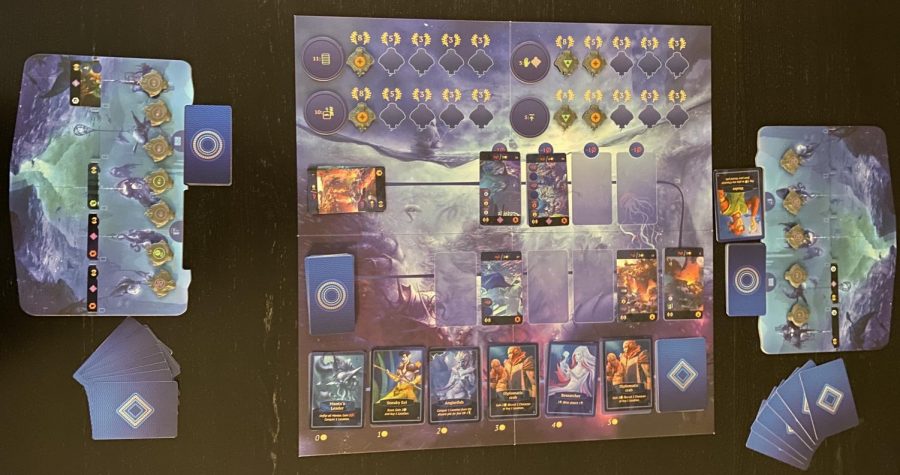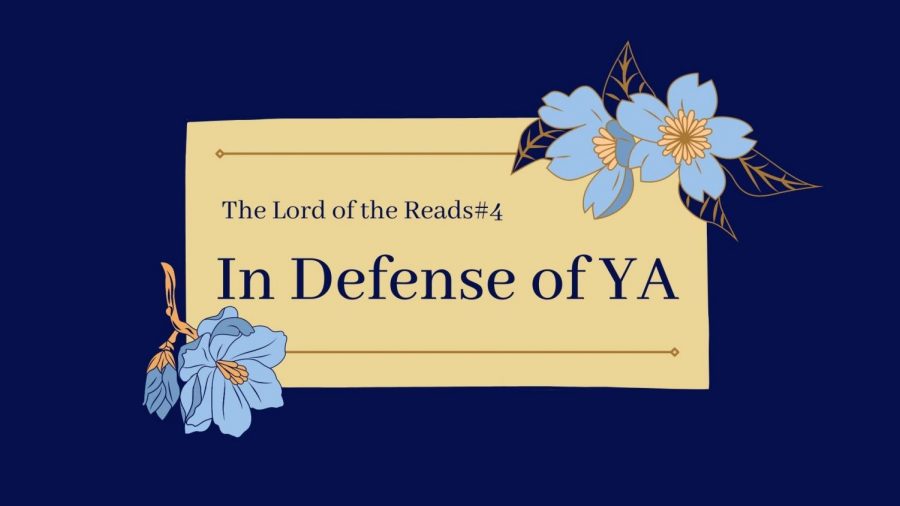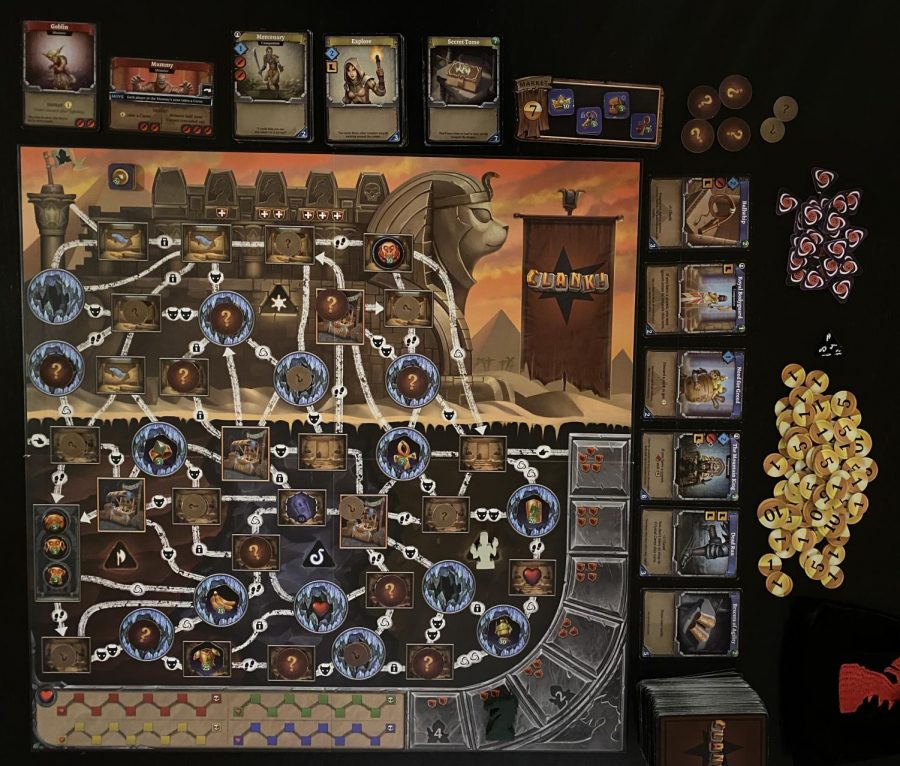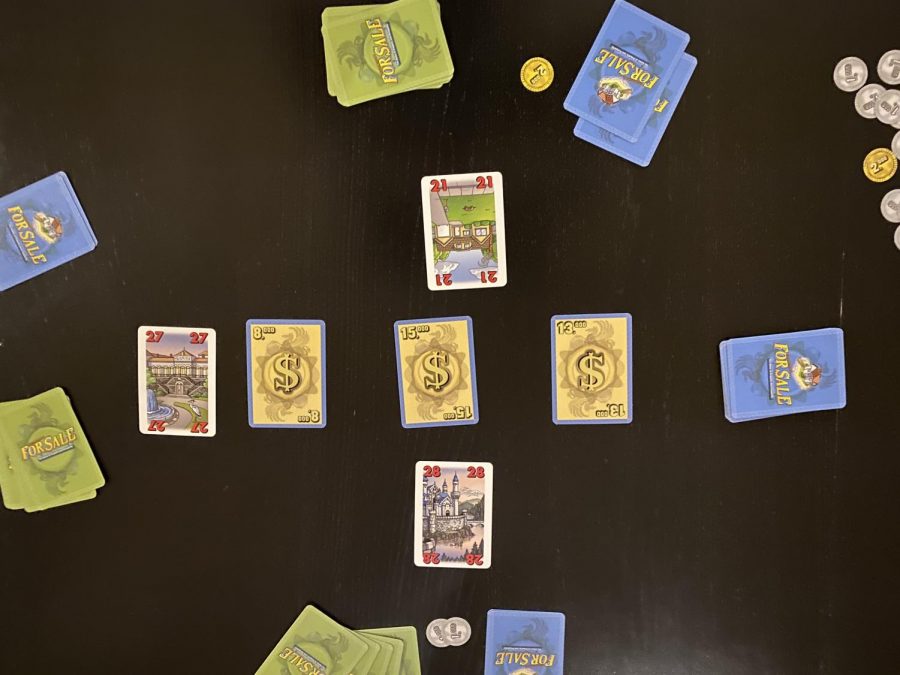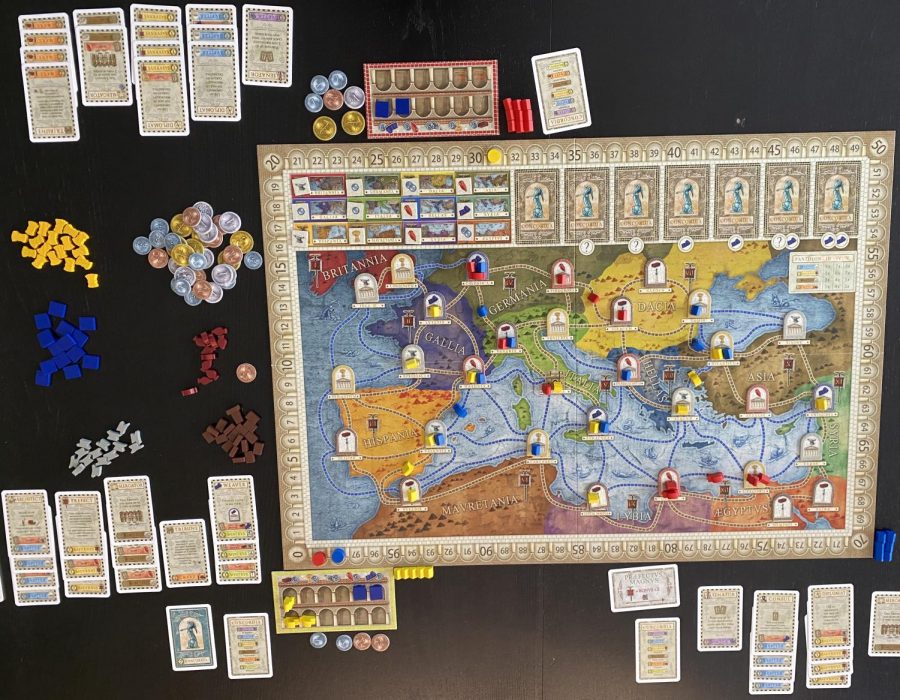Take the role of a powerful lord and send out your agents to recruit adventurers. Your adventurers complete your quests, which affect your influence over Waterdeep. However, new buildings and carefully timed intrigue cards can help and hinder all lords involved.
Lords of Waterdeep is a medium-weight worker placement game for 2-5 players that takes about 90 minutes to play. Designed by Peter Lee and Rodney Thompson, Lords of Waterdeep also features a “take that” aspect with the implementation of intrigue cards that can benefit and hinder your opponents. At the core of this complex game, the rules are easy to learn, so let’s look at how it plays and what I think of it.
How to Play
At the start of the game, each player gets 2-4 agents depending on the player count. Each player also gets some money based on the turn order. Each player will also put one agent below the fifth space of the round track. You’ll get two intrigue cards, which have special effects you can trigger at certain points in the game. You will also get two quests that show a combination of cubes and money at the top and victory points, cubes, money, and other effects at the bottom. Each player also gets one lord card that provides players bonus points for completing certain types of quests.
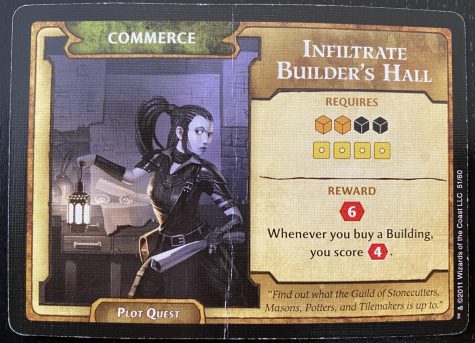
The game takes place over eight rounds. During these rounds, players take turns placing one agent at an empty building on the board. These buildings will immediately benefit that player by providing cubes or money. After a player places their agent, they can look at their quests and see if they can complete any of them. This process will continue until players place all their agents; then they move to the next round. After the fourth round, each player will get an extra agent. At the end of the eighth round, there’s some final scoring for leftover resources and the lord card. The player with the most points is the winner.
So quests are an integral part of the game, but how do I complete them? Let’s use the example quest in the photo. The part above the line shows that I need two black cubes, two orange cubes, and four gold to complete the quest. The icons below the line tell me that I will get six points for completing the quest and four additional points anytime I buy a building. I start with four gold, so I just need to get two black cubes and two orange cubes. I will place my agent at the Field of Triumph to take two orange cubes.
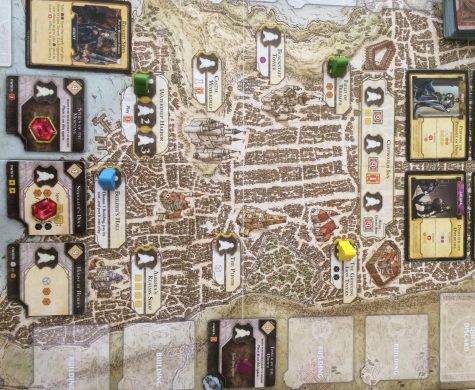
The blue player goes next and places their agent at the Builder’s Hall. That player pays four gold to put the advanced building, Tower of the Order, into play under their control. Advanced buildings are additional spaces where players can send their agents. The player who sends their agent there gets the reward on it, and the owner of the building receives the owner’s benefit in the bottom corner of the tile. Another advantage of building is that you get one victory point token on that building. At the start of each round, each building in the Builder’s Hall gets another token.
The yellow player places their agent and takes two black cubes as a result. I wanted to place my agent there to finish my quest, but I will have to do something else now. Suppose I wanted to ensure that I get my black cubes next round. In that case, I could go to the Castle of Waterdeep, where I would take the first player marker for the next round and draw one intrigue card. Since I already have the first player marker for this round, I might think about taking other cubes or money for the future. If I wanted to get more quests, I could place my agent at an empty space at Cliffwatch Inn. The first two spaces let me take a face-up quest card and get either two gold or an intrigue card. Sending an agent to the third space will discard all of the face-up quests and put four new ones from the deck. Then, the player can take one of the newly revealed quests. That space is the only way to reset the quests.
Although all three of those options are decent, I decided to send my agent to Waterdeep Harbor because I want to play an intrigue card. Going to Waterdeep Harbor is the only way to play an intrigue card. In this case, my intrigue card gives me two black cubes and each other player the option to give me a black cube for three points. The other benefit of going to Waterdeep Harbor is that the agents placed there are reassigned to other empty locations at the end of the round. Not only did that move help me complete my quest, but I will also get to take an extra action with that agent once all players have placed their agents onto the board.
Final Thoughts
Lords of Waterdeep is a pretty simple game about planning out moves to collect resources needed for quests. However, it’s much easier said than done as you’ll find lots of factors that can get in your way. You might have a great set of moves lined up, but another player places their agent at the building you wanted to go to. Or maybe someone decides to give you a mandatory quest or plays an intrigue card that makes you lose the cube you need. If none of those factors existed, Lords of Waterdeep would be a very boring game where you could do whatever you want.
After your turn, there’s an internal tension where you’re hoping nobody takes your spot. The game’s strategy comes from how good your initial plan is, and what you do when someone blocks your spot. The player interaction is a big plus for the game.
Now it’s important to consider scalability because this game has a different feel with different numbers of players. You start with two agents in four and five player games, which balances the game length but doesn’t give you enough time to do anything. It takes a long time to complete your first quests, and there’s lots of downtime between turns. The game is better with two players because there isn’t as much downtime, and fewer players result in a faster game. However, some will find that two-player games give players too much time and flexibility to the point where the game is easy. For this reason, I think the game is best at three players because there isn’t too much downtime, and you have enough agents to complete a reasonable number of quests. In summary, this game is excellent with three players, good with two players, and just okay at four players. I would not choose to play this with five players.
The three things I want to talk about this game are my favorite part of the game design, the best mechanical aspect, and the worst parts of the game.
An interesting part of the game design is that there are five types of quests. Your lord card will usually provide bonuses for completed quests for two of the types. Each quest type could require any of the cube colors or money, but four of the quest types specialize in a certain color. The fifth type requires more money than the other quests. The fascinating part of this is that each of the quest types appears to have some other correlations with the rest of the game’s mechanisms. For instance, the Arcana quest type requires more purple cubes but also has many effects related to intrigue cards. The Commerce quest type usually needs more money, but it also deals with stuff related to buildings.
Giving each quest type more flavor beyond different colors was a great choice by the designers. The quests are very asymmetrical. You don’t have many quests that are identical in every way except for cube color. The rarity of the different cube colors and the correlations for each color allows for more long term planning. Once you’ve played the game a few times, you can look at the quest types on your lord card and see what combinations exist.

My favorite mechanical aspect of the game is the advanced buildings that players can purchase to add extra spaces for agents. The actions on the building tiles are better than the basic ones printed on the board. Since the building owner will benefit regardless of who takes action there, it encourages all players to use buildings controlled by anyone.
The strategies for buildings are very interesting, and the building effects also match the themes of each cube color and quest type. You have to think about who will want to use the building, what your benefit will be as the owner, and the initial cost and reward for building it. Since each building receives one victory point token at the start of the round, buildings that stay in the Builder’s Hall for a long time will eventually provide a lot of points to whoever buys it. Buildings are an essential part of the game because they stop the game from being boring.
There are a couple of things that I don’t like about the game. The intrigue cards are one feature that I am on the fence about. There are three types of intrigue cards: attack, utility, and mandatory quest; I like two of them. The attack cards sound mean, but most of them only remove one cube from each opponent; I like that they all provide a way to benefit you as well. The photo on the right shows the attack card Arcane Mishap which forces each opponent to remove a purple cube but also gives you an intrigue card for each opponent that doesn’t do it. You don’t have to use attack cards to hurt other players.
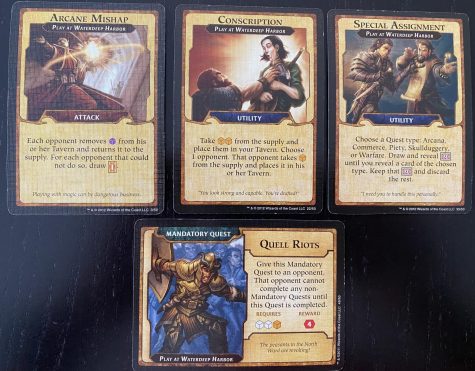
The utility cards are my favorite because they have unique abilities. Some of the cards, like Conscription, are straightforward because they give you some cubes and give someone else a cube. On the other hand, Special Assignment is a more complicated card that lets you discard quests until you get a certain type. That’s an example of a card that only involves you, but many of the utility cards positively interact with your opponents. It’s also good to note that you don’t need to be an experienced player to understand any of the intrigue cards. Even the card where you have to name a quest type does not scare new players because they can always name one of the quest types on their lord card.
Mandatory quests are horrible cards to include in the game. You give them to another player, and they have to complete the mandatory quest before they can complete any of their other quests. I don’t know why the game has mandatory quests; they just ruin the game experience. First of all, I have to waste one of my agents to play the mandatory quest. Secondly, I could potentially mess up your entire game for a while by giving you the quest, and there’s no satisfaction in saying that you messed up someone’s game. Besides, the player you gave the mandatory quest to often gives one right back to you. While you could defend yourself against those quests by keeping a ton of extra cubes, you would always prefer to use your cubes on regular quests. Mandatory quests are not fun at all, and the game would play just fine without them.
The artwork in the game is fantastic. The board and cards look fine. However, the components are subpar. The main component issue is that the card quality is quite bad. After just a few plays, many cards were already bending from normal wear and tear. The cubes are just cubes. I thought they could have used something more interesting than cubes, but that’s less of an issue than the cards. The game comes with a pretty bad custom insert, but the real problem is that the box cover is too loose. All the components would fall out of the insert and move around, so I’ve replaced the insert with a lot of bags. When considering the components, I’m surprised the game is priced at $35-55.
All in all, Lords of Waterdeep is a thematic game. It’s hard to make a game with over 100 cards and name each of them. I like the game a lot because of its strategic choices. The quests are interesting because they have special effects in addition to cubes and points. The buildings add a new aspect to the game by opening up the number of spaces but then making the game harder again when everyone gets an extra agent. Lords of Waterdeep is also an easy game to learn. Still, the terrible card quality brings the game down substantially, so I have to give this otherwise above-average game a 7.5 out of 10.
[star rating=”3.75″]

